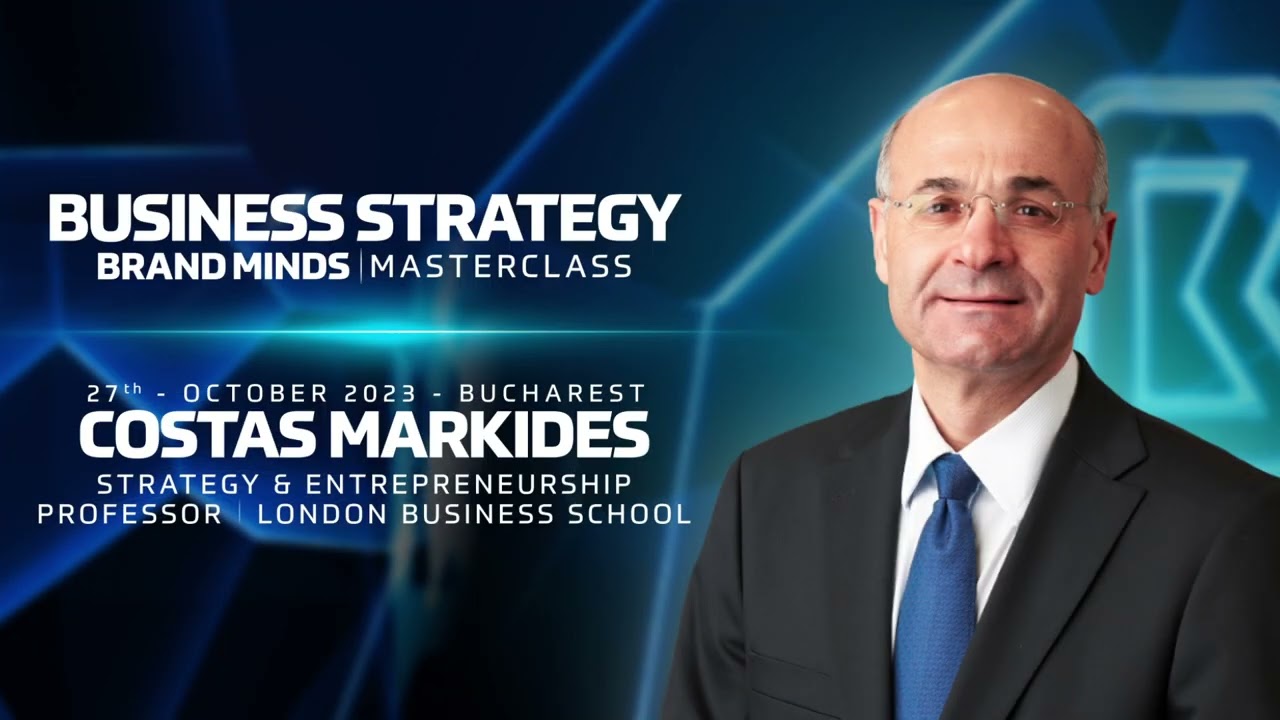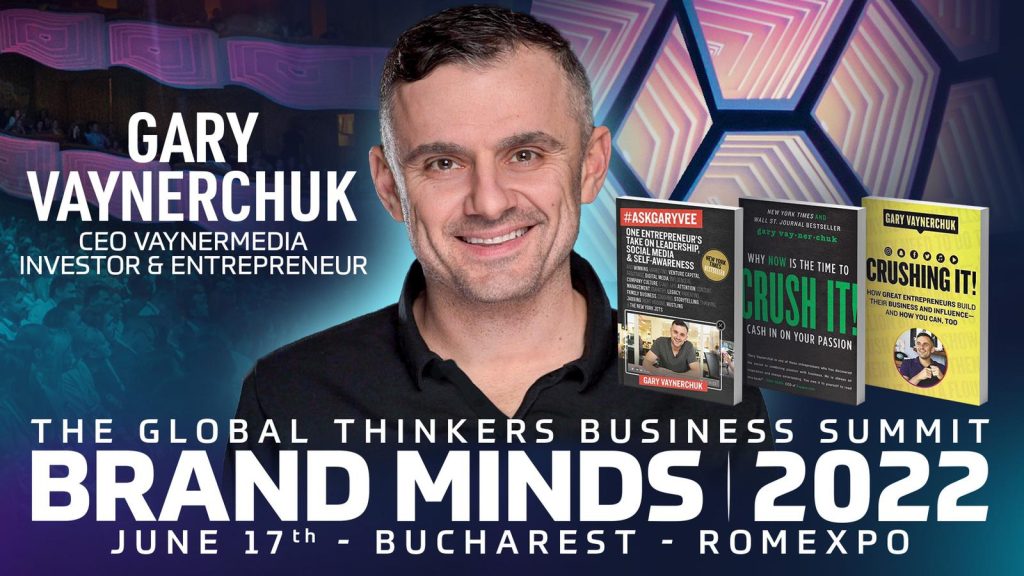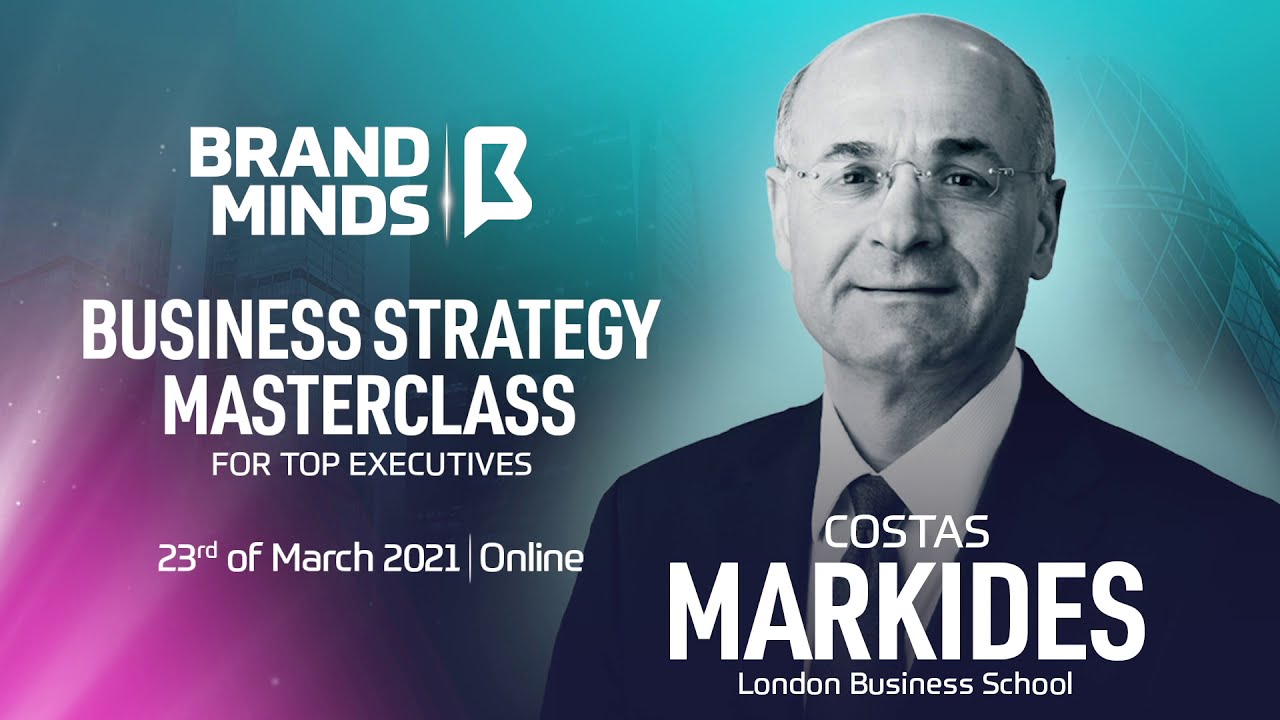October 27 – The Business Strategy Masterclass with Costas Markides
Over the past few years, we’ve had many participants telling us that only one BRAND MINDS event a year was not enough.
We listened and here is one of the surprises we announced on stage, at this year’s edition of BRAND MINDS: a second event, scheduled for October 27. The event is the BUSINESS STRATEGY MASTERCLASS delivered by Costas Markides, Professor of Strategy & Entrepreneurship at London Business School. There is a limited number of seats available (at the time of this article, there were only 200 left out of 400), so get your tickets today. The masterclass takes place at Radisson Blu Hotel, in Bucharest Romania.
Table of Contents
WHO IS THE BUSINESS STRATEGY MASTERCLASS FOR?
The Business Strategy Masterclass provides in-depth business development for the executive team in your organization. Whoever makes decisions regarding the future of your business needs to be here.
- CEOs & Top Executives
- General Managers
- Entrepreneurs
- Business Consultants
- Brand Managers
- Business Owners
- Marketing Managers
- Investors
WHAT DOES THE MASTERCLASS TEACH YOU?
BUSINESS STRATEGY IN A VOLATILE WORLD
- What are the choices that Strategy needs to make
- Why do companies fail to make choices?
- The importance of differentiation
- What kills our creativity and how to make sure that your strategy is innovative?
CREATING A CULTURE OF INNOVATION
- Overcoming company and industry beliefs
- Developing strategies that break the rules
- The principle of variety and how to institutionalize it in the Strategy process
DIGITAL TRANSFORMATION
- What is the Organizational Environment and how to develop it
- The Butterfly Principle: Small Changes, Big Impact
- Who are the effective change agents?
HOW TO MOTIVATE YOUR TEAM
- How to ‘sell’ your Strategy to your team so they buy into it
- How to provide clear communication
- The importance of experimentation
- Tactics to make your message emotional
WHERE CAN YOU APPLY THE LESSONS FROM THE MASTERCLASS?
- BUSINESS STRATEGY: Create efficient strategies that work for the company;
- INNOVATION: Redesign the company roadmap toward innovation-focused goals;
- LEADERSHIP: Upgrade your skills in team management, engagement and strategic communication;
- DECISION MAKING: Make the best decisions for your company’s strategies taking into consideration the latest trends and company culture.
HOW YOU BENEFIT BY ATTENDING THIS MASTERCLASS
- Learn from one of the world’s foremost experts on strategy and innovation
- Unique opportunity for elite networking
- Become an innovative business architect
- Accelerate your professional growth
- Be among the top experts in your industry
- Share ideas with like-minded people
- Meet, connect & grow your network
- Learn how to create new habits to achieve your goals
- Reward yourself with the best learning experience with one of Europe’s best strategic thinkers
HOW YOUR ORGANIZATION BENEFITS BY YOUR ATTENDING THIS MASTERCLASS
- Redesign the strategy which leads to your desired company goals
- Create efficient strategies that work for the company
- Use disruption to develop the business
- Become a fast and efficient decision-maker in a dynamic environment
- Generate unique, efficient business models
- Learn to adapt & make better decisions at tipping points
- Create a work environment that improves performance
- Learn to create an empowering corporate culture
- Expand your network with new strategic partnerships
- Reconnect with industry leaders
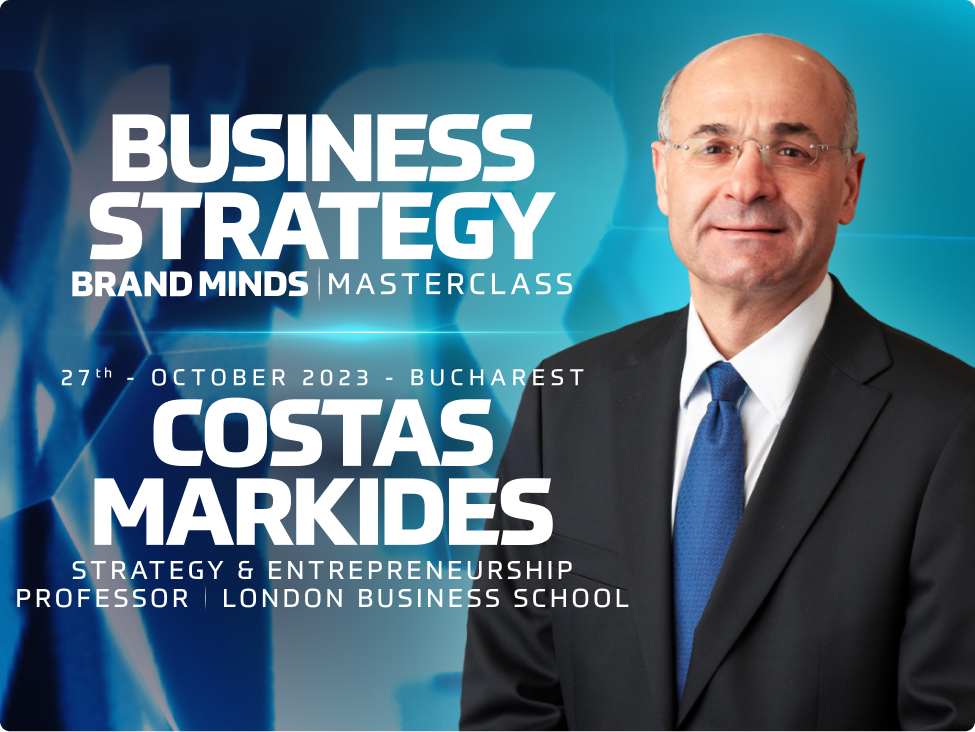
ABOUT COSTAS MARKIDES, PROFESSOR OF STRATEGY & ENTREPRENEURSHIP AT LONDON BUSINESS SCHOOL
FORMER EXECUTIVE EDUCATION FACULTY DIRECTOR AT LONDON BUSINESS SCHOOL
Professor Costas Markides is recognised as one of the world’s foremost experts on strategy and innovation with over 20 years of research in: Corporate Entrepreneurship & Corporate Strategy and Disruptive Innovation
He holds the prestigious Robert P Bauman Chair in Strategic Leadership at London Business School where he has been teaching strategy and innovation for the last 28 years. He is the former Executive Education Faculty Director at London Business School, was a member of the Board of Directors at the Strategic Management Society and is the author of 9 business strategy bestselling books.
Professor Markides is currently teaching courses at London Business School’s programs of Master’s Degree and Executive Education.
DOCTOR OF BUSINESS ADMINISTRATION (DBA) FROM HARVARD
Professor Markides has a master’s degree in Economics from Boston University, and two degrees from Harvard Business School: master of business administration (MBA) and doctor of business administration (DBA).
Attend the BUSINESS STRATEGY MASTERCLASS and prepare your organization for the future!
9 key takeaways from Business Strategy for Top Executives Masterclass
Business Strategy for Top Executives Masterclass with Costas Markides took place yesterday, March 23, 2021.
Read on to discover 9 key takeaways.
Yia sou*, world-changer!
I felt it was appropriate for me to welcome you in Greek, the world’s oldest recorded living language and the native language of Costas Markides, Professor of Strategy & Entrepreneurship at London Business School.
Prof Costas Markides delivered yesterday the Business Strategy for Top Executives Masterclass, a BRAND MINDS live online event.
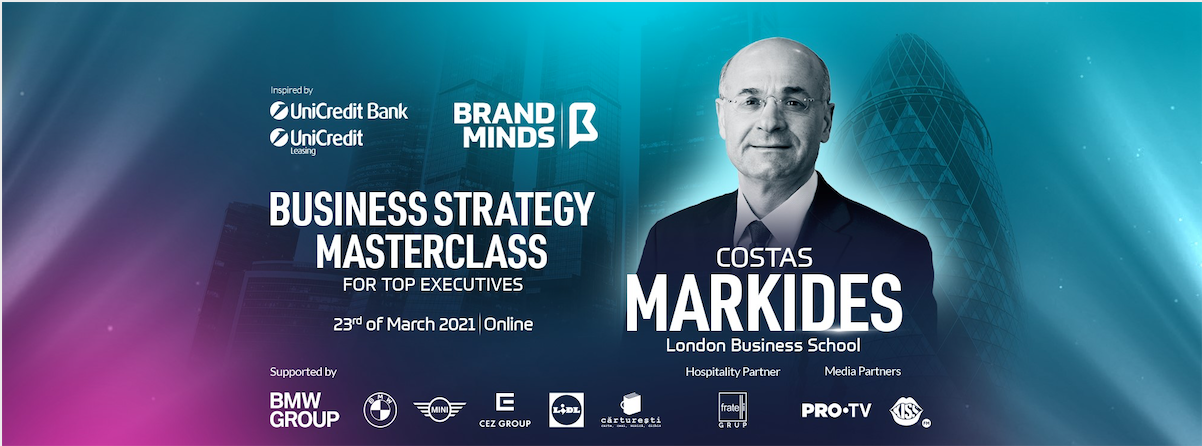
Over the span of nine hours (breaks and Q&A sessions included) Prof Markides delivered a host of amazing insights, latest information and great storytelling.
He spoke with passion about strategy in a volatile world, how to become agile, how to mobilize your organization for strategy execution and how to overcome the latest challenges that new leadership is facing today.
Prof Markides’ high energy and to-the-point teaching style made it easy for everyone attending the masterclass to understand and assimilate the business strategy concepts he was talking about throughout the event.
What was the participants’ feedback?
The masterclass registered a high level of participant engagement. The chat was on fire with attendees asking questions, answering polls and writing comments on the topic at hand.
- 90.3% of participants evaluated Costas Markides’ performance to be amazing;
- 92.9% of participants said the overall experience has exceeded their expectations.
One participant said she felt “full of energy after masterclass:)” and decided she had new things to change in her work with a commitment to “make my team feel special”.
Another participant said attending the masterclass “confirmed some answers”.
Remember when you were a student, taking lots of notes in class? I guess one participant remembered because she told us: “I have filled in 2 A4 pages with notes and many takeaways”.
Another attendee shared with us a smarter way of taking notes: “I have selected 36 keywords that I think will help me structure the strategy of the division I lead”.
We are thrilled when participants tell us “All was above my expectations! Congratulations!”
But one particular type of feedback brings us the feeling of accomplishment: when attendees tell us they had “a great learning experience” and they “will brainstorm afterwards to implement what they have learned”.
Everyone stayed until the end wishing Costas could share one more insight, one more business concept, one more how-to.
As they say, you had to be there. But if you weren’t, you can watch four short cuts from the event with Prof Costas, that I have inserted below.
Without further ado, let’s delve into 9 key takeaways from Business Strategy for Top Executives Masterclass with Costas Markides or as the Greeks say, Pame**!
9 key takeaways from Business Strategy for Top Executives Masterclass with Costas Markides
1.The biggest mistake in a volatile world: believing that you don’t need a strategy.
The pandemic has disrupted the world and brought in a lot of uncertainty. This means companies are facing new challenges, but it doesn’t mean you should use uncertainty as an excuse to do nothing.
Use the information available to make choices.
These choices are your strategy.
Remain flexible and adjust your strategy as needed.
2. Strategy is choices: what to do and what not to do.
Strategy is about making difficult choices.
It’s about choosing who to target and who not to target; what to offer and what not to offer; use one tactic to achieve your goal over another.
What does Prof Costas say?
Stay clear of meaningless statements; they are not strategies. Also strategy should be written down in half a page and answer three questions: WHO-WHAT-HOW.
3. Why do companies fail to make choices? Fear of being wrong.
Companies fail to make choices because they want to avoid any risk that their choice might turn out to be wrong.
So they don’t make any choices at all. Don’t make the same mistake with your company!
Yes, making difficult choices requires a lot of courage. It takes strong leadership to make clear choices in the face of uncertainty and contradictory advice.
4. There are 3 ways of making a decision: analysis, experimentation and intuition.
Which should you use? Well, it depends on the situation.
If it’s about selling to a new type of customer, you could base your decision on a combination of intuition and analysis.
If you want to change your business model, you could experiment first. Ideally it’s a combination of the three, argues Prof Costas.
5. Agility is a by-product of behaviors.
Agility is not something you can ask people to do, said Prof Costas. It is the result of behaviors: questioning, experimenting, talking to your customers etc.
6. To become an agile company, create the right environment around your people.
What looks like a people problem is often an environment problem.
How can you make your organization more agile?
Create the right environment around your people.
Help your employees become more agile by giving them the autonomy to monitor the changes in the outside environment and take action. Find the little tweaks that fit your management style and local culture and introduce them.
7. You won’t win people’s hearts and inspire a change in their behavior through a PowerPoint presentation. Then, how?
The vast majority of employees are not committed to the strategy.
Help them visualize the reason why they should change.
Show your employees how your company’s products or services are changing the lives of your customers.
Reinforce the message through storytelling which is more likely to evoke emotion than a presentation.
There are four tactics to mobilize your organization: visualization, stories, actions that support the message, symbolism.
8. Disruption is a threat and an opportunity at the same time.
A Harvard study reported that the companies that approached disruption as a threat, failed.
The companies that looked at disruption as an opportunity also failed.
The successful companies are the ones that looked at disruption both as a threat and as an opportunity.
9. It is no longer enough to be a good employer, you need to make your people feel special for working for you.
How can you make your employees feel special?
There are 5 ways:
1) by providing them with a special purpose,
2) by surrounding them with special people through super selective recruitment and using unusual criteria (ie: passion),
3) by building a special working environment for them,
4) by selling special products, and
5) by treating people in special ways.
It’s difficult to translate nine hours of insights, statistics, case studies and other examples into ten takeaways.
On this note, allow me to conclude the present article with the following quote from Costas Markides:
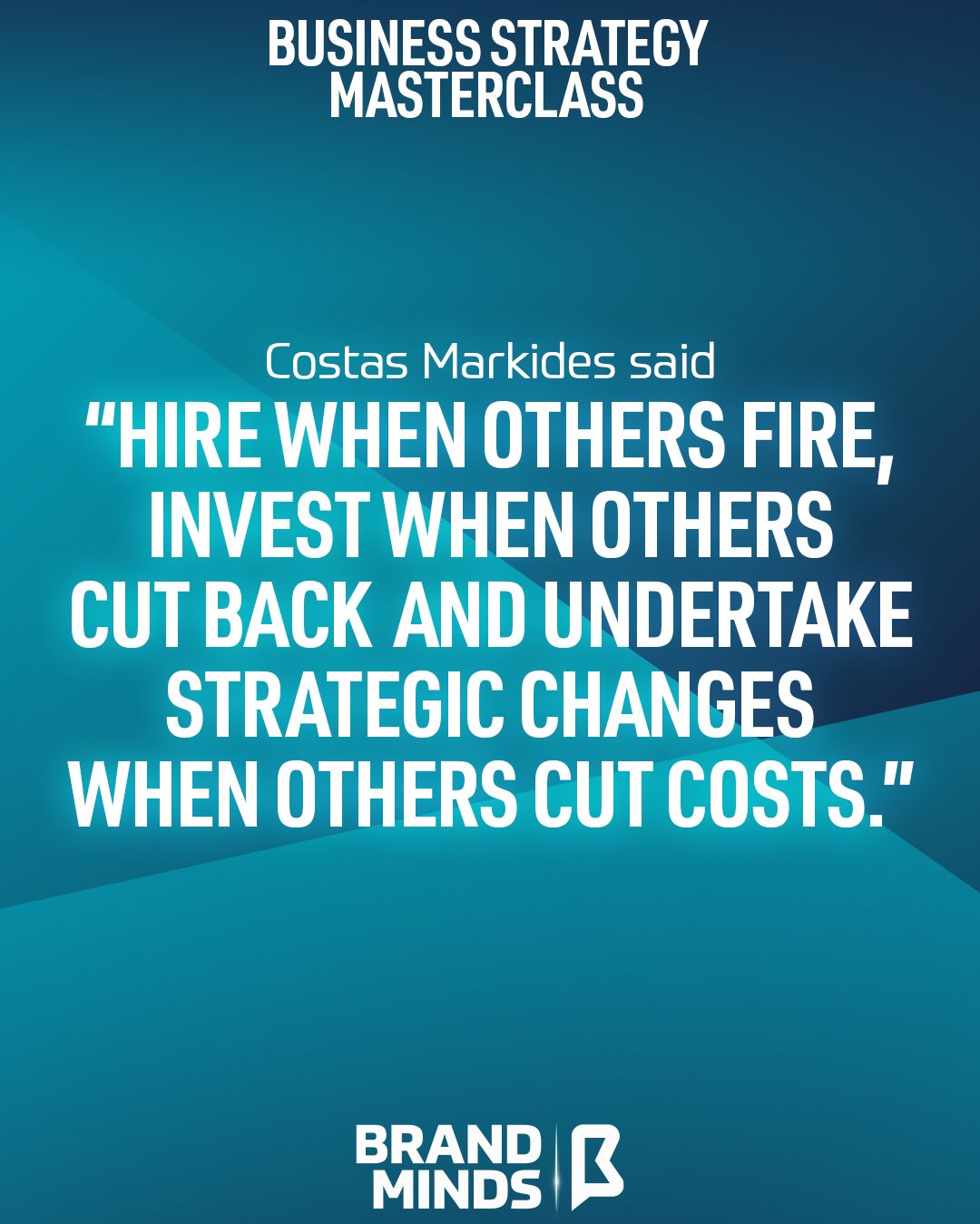
Efharisto***, Prof. Costas Markides!
Yia sou* = Hello!
Pame** = Let’s go!
Efharisto*** = Thank you
Last days to join Business Strategy for Top Executives Masterclass with Costas Markides
Next week on March 23, 2021, founders and entrepreneurs, CEOs and investors, business developers and sales executives will participate in Business Strategy for Top Executives Masterclass with acclaimed Prof Costas Markides.
If you’re looking to turn your business from disrupted to disruptor and find innovative ways to thrive, then this masterclass is for you.
These are the last days you can get your tickets.
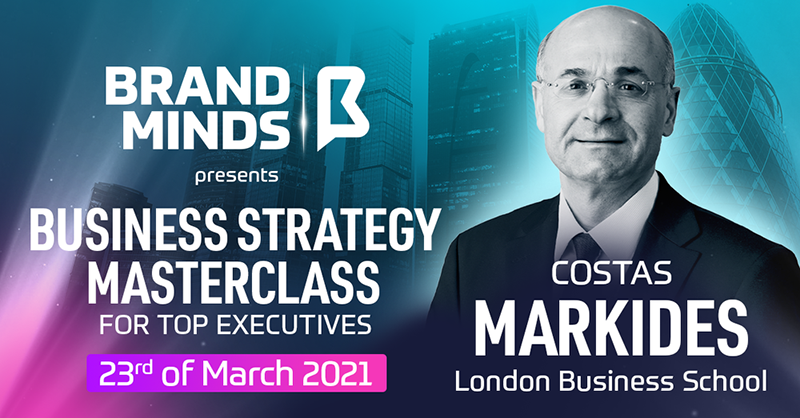
The masterclass is held online through live streaming. It starts at 9 am and ends at 5 pm with a Q&A session which is a great opportunity to get answers to your questions. An outside perspective over your particular situation is invaluable. It could light a new pathway that you couldn’t have seen otherwise.
Here is the agenda of Business Strategy for Top Executives Masterclass:
Session 1: STRATEGY IN A VOLATILE WORLD
Success doesn’t come by chance or fall in your lap. It’s the result of a well-thought strategy and an excellent implementation plan.
You know how they say about overnight success?
This overnight success has taken ten years of hard work and perseverance.
That’s why you need a strategy for your business. And given the volatile nature of the world we are living in, even more so today.
Every successful business has a successful strategy. Remember: strategy before tactics.
Amazon’s main strategy is to focus on their customers. But the global leader of the ecommerce market doesn’t just listen to its customers.
Year after year, since 1997, Amazon sets out to delight its customers.
And that’s the drive pushing every improvement and product or service that the company has ever made: its search recommendation engine, AWS, one-click purchase, Alexa and so on.
Join the masterclass to upgrade and improve your business strategy!
Session 2: STRATEGIC AGILITY IN TODAY’S WORLD
There has never been a better time to go agile in business. Times are changing quickly and the business environment must adapt and keep up.
In 2014, consulting company McKinsey & Co introduced two new dimensions to their organisational surveys: speed and flexibility.
They described the companies that combined both as agile.
Companies that are agile can adapt quickly to new challenges and opportunities. They mobilize quickly and show a strong relationship between organizational health and the creation of value. They move to market faster than traditional companies and have lower costs.
Join the masterclass to discover ways to create strategic agility for your business!
Session 3: MOBILIZING THE WHOLE ORGANISATION FOR STRATEGY EXECUTION
Whether you lead a business of thousands of employees or a small team of five, you need to be aware that for the strategy to work, everyone must be on board.
Every employee, from front desk to product development to supplier quality has to understand the strategy, contribute to its implementation and be on the same page with everyone else.
Learn from strategy expert Costas Markides how to mobilize your organisation for strategy execution.
Session 4: NEW CHALLENGES FOR LEADERS
One of the abilities that successful leaders need to develop or acquire is the ability to see around the corner.
What does that mean?
It means to have one foot in the future.
It implies to be able to spot trends before they go mainstream and take steps to leverage them to the benefit of your business.
It’s called strategic foresight. Strategic foresight allows companies to prepare for the future.
What challenges do leaders have to face in the near future?
Is it employee high turnover due to low engagement levels in the context of the work-from-home situation?
Everything going digital and online?
Changes in customer behaviour?
Attend the Business Strategy for Top Executives to find out!
Join the Conversation
We’d love to hear what you have to say.
Get in touch with us on our LinkedIn Page, Facebook Page, Twitter or TikTok.
Jeff Bezos is stepping down as Amazon CEO. What is his legacy?
In a letter published yesterday, Jeff Bezos announced he is stepping down as Amazon CEO later this year. Andy Jassy, Amazon’s head of cloud computing will be taking the helm.
Jeff Bezos founded the eCommerce retailer 27 years ago in a garage when it “was only an idea” and people were asking him “What’s the internet?”.
Leveraging the power of the internet and thanks to his vision on what makes a successful company, today Amazon is the world’s largest online retailer of consumer products and a leader in the cloud computing segment.
With a market value of 1.6 trillion dollars, Amazon is in the Top 5 big tech US companies and it doesn’t look like it’s going to slow down.
“Being the CEO of Amazon is a deep responsibility, and it’s consuming. When you have a responsibility like that, it’s hard to put attention on anything else”, he writes. In his new role as Executive Chair of the Amazon Board, Jeff Bezos will still watch closely over the company but will dedicate his time and energy to other Amazon initiatives such as the Day 1 Fund, the Bezos Earth Fund, Blue Origin, The Washington Post “and my other passions”.
As Jeff Bezos steps down as CEO of the world’s largest eCommerce retailer, let’s take a look at what he leaves behind, his legacy.
Jeff’s business strategy is his legacy.
Here are eight essential factors of Jeff’s successful business strategy for Amazon:
1. Move quickly to solidify and extend your current position
In 1997, with big tech companies like Microsoft and AOL expressing interest in online commerce, Bezos saw a window of opportunity.
“Our goal is to move quickly to solidify and extend our current position while we begin to pursue online commerce opportunities in other areas. We see substantial opportunity in the large markets we are targeting”, he writes in his 1997 shareholder letter. I remind you that, at the time, Amazon was still selling books.
2. Set out to delight your customers
Jeff believes complaining customers are a company’s most valuable resource for growth. They reveal blind spots that employees or managers could not otherwise identify giving the business the opportunity to improve and develop.
Amazon’s focus on customer obsession is one of its underlining factors for success.
3. Make bold investment decisions
At the heart of Amazon’s investments is the customer.
Every investment that Amazon makes is to further improve customer satisfaction and experience by developing systems, infrastructure and service.
4. Become aware of proxies
In his 2016 shareholder letter, Jeff talks about the danger of allowing proxies to gain power within the company.
Proxy is something or someone who acts as a substitute. This is when the process has become more important than the result and replaced it. It’s the process as a substitute for the outcome.
When someone in the company starts saying This is how we’ve always done it, it’s time for a change.
5. Your employees must think like an owner
Jeff acknowledged early on that hiring the right people was paramount if Amazon was to be successful and achieve its objectives. “Setting the bar high in our approach to hiring has been, and will continue to be, the single most important element of Amazon.com’s success.”
The retailer behemoth compensates its employees in Amazon stock than cash because becoming stockholders changes their mindset.
6. Embrace external trends
Businesses that adapt to the latest technological trends and customer behaviour changes evolve and survive. Businesses that resist change, don’t survive.
His advice to every company founder is to acknowledge powerful external trends like AI and machine learning and embrace them quickly.
7. Make high-quality decisions fast
Large organizations like Amazon have many things going for them with one downside: they are slow at making decisions.
Jeff didn’t allow this to happen to Amazon.
He created a system of making high-quality decisions fast which relies entirely on the Day 1 mindset. Day 1 companies are startups, nimble and agile, bursting with vitality. Day 2 companies are already heading for the end. Amazon is a Day 1 company.
8. Implement high standards
Amazon’s obsession with customer satisfaction has led to a number of outstanding product innovations (Alexa, AWS) and excellent customer experience (Amazon Go, 1-click purchases).
What does it take to achieve such results? Implementing high standards in the company.
At the core of Amazon’s supremacy is innovation. So it’s no surprise that Jeff Bezos ends his letter to the employees with an encouragement to continue down the path of innovation.
Keep inventing, and don’t despair when at first the idea looks crazy. Remember to wander. Let curiosity be your compass. It remains Day 1.
Jeff
Join the Conversation
We’d love to hear what you have to say.
Get in touch with us on our LinkedIn Page, Facebook Page, Twitter or TikTok.
Get your company back in growth model with Business Strategy for Top Executives
Are you looking to get your company back in growth model?
Then BRAND MINDS’ Business Strategy for Top Executives Masterclass is for you.
Get access now, the price goes up on February 1st!
The BRAND MINDS Business Strategy for Top Executives is a full-day premium learning experience
The Business Strategy for Top Executives Masterclass is hosted online on March the 23rd and provides participants with the opportunity to learn the principles of innovative companies.
The masterclass is a full-day premium learning experience delivered by Costas Markides, one of the world’s most renowned experts on strategy & innovation.
As the Professor of Strategy & Entrepreneurship at London Business School for the past thirty years, his expertise is focused on strategic and business model innovation.
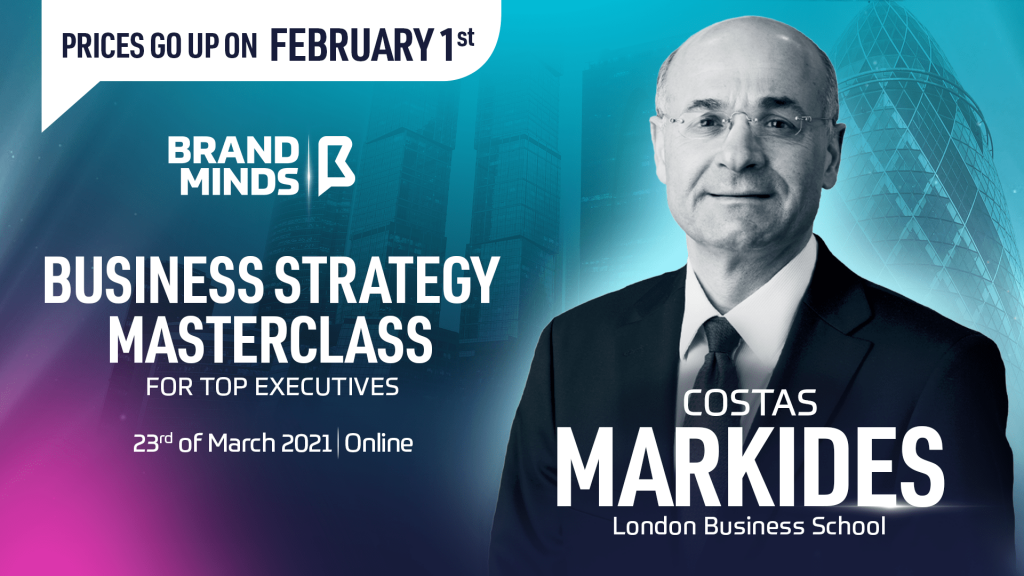
By attending this masterclass, participants will
- Explore NEW BUSINESS OPPORTUNITIES;
- NETWORK with top executives;
- Develop a CREATIVE BUSINESS STRATEGY;
- Learn to FORESEE BUSINESS TRENDS;
- Generate EFFICIENT BUSINESS MODELS;
- Explore how DISRUPTION CAN DEVELOP their industries;
- Learn to ADAPT in a volatile business ecosystem.
Business Strategy and Innovation are the answer for Successful Top Executives
The pandemic is the most disruptive event in modern history taking an unprecedented toll on the business environment.
It has presented top executives in every industry with new challenges ranging from team management to customer behavior changes, business operations to company culture.
When disruption occurs to such an extent, business executives need to take action.
How can businesses protect themselves against disruption?
By designing a new business strategy and a company culture that encourages innovation.
Why is business strategy important?
Because strategy drives decisions in business. The strategy provides the organization with the most effective path and direction to achieve its goals.
Why is innovation essential for business?
Because innovation helps businesses grow. Organizations that are continually innovating are more likely to achieve competitive advantage.
Set your business for success and attend BRAND MINDS’ Business Strategy for Top Executives Masterclass!
Join the Conversation
We’d love to hear what you have to say.
Get in touch with us on our LinkedIn Page, Facebook Page, Twitter or TikTok.
4 lessons in leadership from Hamilton: An American Musical
Hamilton is the latest hit in musicals which has rapidly grown to a pop culture status. Read on to learn 4 lessons in leadership from Hamilton: An American Musical.
Hamilton, the cultural phenomenon surpassed $1 billion in global sales
Hamilton: An American Musical made its Broadway debut six years ago and it has already become one of the most popular musicals of all time.
In 2016, the show won 11 Tony Awards, the Grammy for best musical theatre album and the Pulitzer Prize for Drama.
The Hamilton music is a wonderful combination of rap, hip-hop and R&B raising the bar for every actor in the show and setting records. Because it’s rap and hip-hop, Hamilton packs the highest number of words per minute than any other musical: 144 with a total word count of 20,520. The runner-up, Phantom of the Opera had 77 words per minute and a total of 4,709 words. The music literally takes your breath away!
Tickets sell out almost instantly. Hamilton is a smashing hit with fans of all ages and all over the world. Just browse the content on the musical’s social accounts (followed by 4,450,000 million people combined, btw!) and see for yourself.
Disney+ has contributed to Hamilton’s global success by bringing the acclaimed musical to the small screen. The Hamilton Movie premiered on Disney+ streaming service last year, in July. It was a good business decision for Disney+ also: the musical spurred a 74% spike in downloads.
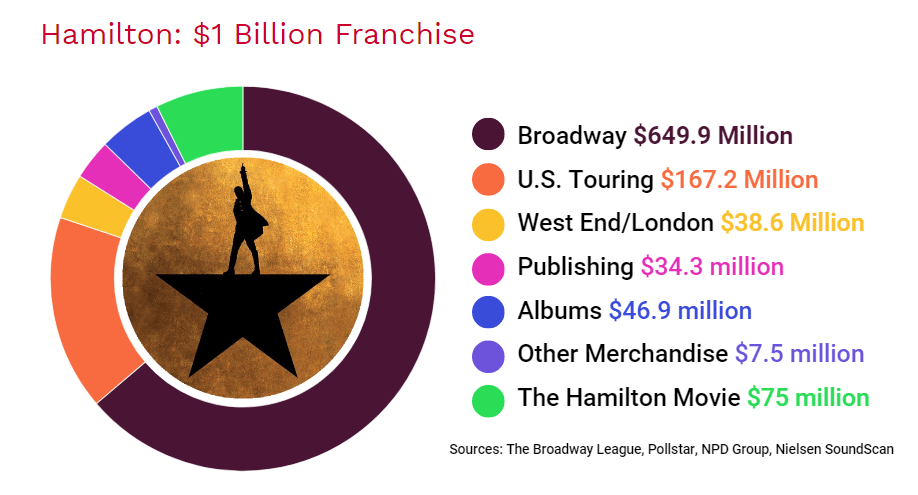
4 lessons in leadership from Hamilton: An American Musical
Hamilton tells the story of Alexander Hamilton, one of the Founding Fathers of the United States of America.
The story, music and lyrics were written by actor and Tony winner Lin-Manuel Miranda and is narrated by Aaron Burr, a contemporary of Hamilton and the third vice president of the United States.
Who is Alexander Hamilton?
Alexander was an immigrant from the Caribbean who raised himself from poverty.
He was born out of wedlock and became an orphan as a child. He was driven by ambition, had a remarkably sharp mind and rhetorical skills.
When he was in his early 20s, Alexander became George Washington’s right-hand man during the American Revolutionary War.
Later he was appointed the 1st U.S. secretary of the treasury. He played a key role in defending and ratifying the U.S. Constitution and was the chief architect of the American financial system.
Here’s what the leaders of the 21st century can learn from the 18th-century leader, Alexander Hamilton:
- Make self-growth a goal for you and your team;
- Develop partnerships;
- Tell the world what you believe in and stand by your beliefs;
- Communicate your ideas.
Lesson #1: Make self-growth a goal for yourself and your team
Alexander Hamilton is a unique figure among the other Founding Fathers of America. His family was not wealthy and didn’t have any titles. He was so poor that he couldn’t afford to go to any regular schools. Because he was an illegitimate child, Alexander was also denied access to church schools.
But he was an avid reader. What he couldn’t learn in school, he learned by himself.
By the age of 15, he had already developed a talent for mathematics and business working as a clerk for a local successful merchant.
He could also write extremely well for his age which helped him stand out in his community.
Helped by his employer, Alexander enrolled in King’s College (later renamed Columbia University) at 16 where he was granted independent study. This allowed Alexander to move through his courses quickly, often hiring college professors to provide him with personal instruction outside of regular class hours. He also became fluent in French which would give him an advantage during the American Revolution.
After the war, he studied law to pass the bar exam and become a lawyer. He didn’t go to law school, he studied independently for ten months before passing the exam with flying colours.
Hamilton was an ambitious young man who learned very early in his life that acquiring knowledge and developing one’s skills and abilities was paramount to being fulfilled and successful.

Scene from Hamilton, the musical
No matter your life situation, expanding your knowledge in the areas of your interest is essential to your success.
Young or old, learning never stops. Go deeper on the topic of your choosing. Or start afresh on a new path towards a different interest that you always wished you could explore but never found the time.
Now is the time to begin. Pick up a book and become a self-taught leader. Or enroll in an online class.
If you are looking to learn the principles of innovative companies, attend BRAND MINDS’ Business Strategy Masterclass for Top Executives with London Business School professor Costas Markides.
The masterclass takes place online, on the 23rd of March, 2021. You will learn how to develop custom business models and business strategies for your company. Learn more about the masterclass.
A successful leader seeks opportunities to grow not only himself but his team too. Because a leader’s main responsibility is to grow other leaders. So consider attending our business masterclass with your team. Check our discounts for team growth.
Lesson #2: Develop and maintain partnerships
The musical depicts the strong bond between Hamilton and several influential figures, including spy Hercules Mulligan, the anti-slavery John Laurens, the French revolutionary Marquis de Lafayette and commander-in-chief and later the first President of the United States George Washington.
Hamilton became friends with Mulligan, Laurens and Lafayette. They shared the same values, supported each other and became close during the war. Their leadership, resourcefulness, and courage helped secure the American victory with the British.
A young captain in the army, Hamilton demonstrated superior command of administrative and logistical matters which soon brought him to the attention of General George Washington. The general invited him to become one of his aides and Alexander accepted the offer. He remained on Washington’s staff for four years forming a strong and lasting friendship with the general, who relied on him heavily. It was also a mentorship relationship, one which helped Hamilton acquire leadership skills.

Scene from the musical: General George Washington and his right-hand man, Alexander Hamilton
Aside from a close-knit team, a leader needs partners, people who share the same values and who work together to achieve a common goal. It takes a lot of work and trust to build a valuable partnership. Both partners must deliver on their word and support each other through thick and thin.
Look for partners that can build you up. Develop close relationships with people that you can learn from. Seek and offer support to your partners when they need it. Let them know that you will be there for them. And they will be there for you.
Lesson #3: Tell the world what you believe in and stand by your beliefs
Hamilton had strong beliefs and didn’t shy away from making them known to whoever was willing to listen.
Thanks to his rhetorical abilities, it was easy for him to step on a chair and convey his ideas to the audience with confidence and ambition.
Here is the scene where Laurens, Madison and Lafayette notice Alexander’s talent and gently encourage him to the forefront – “let’s get this guy in front of a crowd”.

Scene from the musical: Alexander Hamilton (front) with Laurens, Madison and Lafayette
What are your core values and purpose? Talk about them, share them with your employees, partners, clients and suppliers.
Today a company employing thousands of people all over the world has this in common with a company with just twenty employees – they both stand for something.
Walmart, Disney and L’Oreal have announced their commitments to a zero deforestation policy, an initiative that ensures companies make their products without destroying the world’s forests.
Atlassian, Dropbox and Accenture champion diversity and foster a culture of inclusivity.
And then you have small companies or startups that are built around sustainability and diversity from the get-go. Ecoalf is a Spanish company that turns plastic sea waste into high-quality fashion products. Danish company Matter assists its clients to choose a sustainable pension, namely the company makes sure that its clients invest their pensions in companies that have a positive impact on the world.
When the business is built on a purpose with positive social and environmental impact, it differentiates itself from the competition. Having a brand purpose that customers care about has been reported to influence the brand’s revenue.
Accenture’s latest annual Global Consumer Pulse Research found that 62 per cent of customers want companies to take a stand on current and broadly relevant issues like sustainability, transparency or fair employment practices.
Unilever is a good example of how focusing on sustainability drives revenue. Nearly half of its top 40 brands focus on sustainability with Knorr, Dove and Lipton among them. According to the report, these brands grow 50 per cent faster than the company’s other brands and deliver more than 60 per cent of the company’s growth.
Making your beliefs known is also beneficial to your personal brand in that it opens up various opportunities for projects or support that you couldn’t get otherwise. Instead of going to people, people come to you.
In the musical, Aaron Burr is the opposite of Hamilton. He believes that revealing his views on topics of the highest importance makes him vulnerable, effectively handing his enemies the bullet with which to kill him. One of his recommendations to Alexander starting out his life in New York is to “talk less, smile more and don’t let them know what you’re against or what you’re for”.
That strategy didn’t play out well for Aaron when he ran against Thomas Jefferson for the presidency of the United States years later, in 1800. With both candidates at a tie, Hamilton was called upon to announce which candidate claimed his vote. Although he didn’t agree with Jefferson on many subjects, Hamilton votes for him because “when all is said and all is done, Jefferson has beliefs, Burr has none!”

Scene from the musical: Aaron Burr played by Leslie Odom Jr
Lesson #4: Communicate your ideas, beliefs and purpose
As you learned at #1, Alexander was quite the writer. When he was a teenager, he published several letters and poetry in his local newspaper that made him famous in his community.
Later on, among his duties as Washington’s right-hand man was writing letters for the General.
While studying for his bar exam, Alexander published a book called Practical Proceedings in the Supreme Court of New York which compiled his analysis of old New York court cases. The book became a manual in New York legal studies for decades afterwards.
To convince the people that the Constitution was essential to their liberty, Hamilton decided to write a series of essays. He enlisted John Jay and James Madison to assist him in writing the essays. The three men published 85 essays which became collectively known as the Federalist Papers of which Hamilton wrote 52.
How did Hamilton write? Paraphrasing the Non-stop song: Hamilton wrote day and night like he was running out of time, like tomorrow won’t arrive, as he needed it to survive.

Excerpt from the Non-stop scene
If you’re leading a company, people want to hear from you. If you’re leading a team, the team members want to hear from you.
You have a unique perspective on business and life. What are your challenges? What are your successes? What are your aspirations? What inspires and motivates you? People want to learn about other people’s experiences.
Today there are many ways leaders can communicate their ideas, beliefs and purpose. If you’re good with writing words on paper, start a blog. If you’re a good speaker, start a podcast or YouTube channel. Go live on Facebook or LinkedIn.
Bill Gates writes on Gates Notes, his blog and has just started hosting a podcast series with co-host actress Rashida Jones. Former Disney CEO Robert Iger wrote a book. And I could go on with many other examples.
The tools are readily available, all you need is a simple strategy and the time to implement it.
Join the Conversation
We’d love to hear what you have to say.
Get in touch with us on our LinkedIn Page, Facebook Page, Twitter or TikTok.
Alexander Hamilton biography source: SparkNotes
How Amazon, Nike and UiPath drive innovation
Innovation is at the core of Amazon, UiPath and Nike. Curious to know how these global companies drive innovation? Keep reading!
Amazon – Innovating by focusing on customer needs like no other company in the world
On December 15, 2020, Amazon announced that Twitter has selected AWS to provide global cloud infrastructure to deliver Twitter timelines.
A day before, Amazon launched Alexa’s new Live Translation feature. This feature allows individuals speaking in two different languages to converse with each other, with Alexa acting as an interpreter and translating both sides of the conversation.
Earlier this month, on December 8, 2020, Amazon Web Services (AWS) and the BMW Group announced a comprehensive strategic collaboration to further accelerate the automaker’s pace of innovation by placing data and analytics at the center of its decision-making.
These are just a few of the innovations that Amazon releases on a monthly basis. Amazon began focusing on technology innovations in the late 1990s.
The company’s first major breakthrough was its recommendation algorithm, also named recommendation engine.
In 2003, Amazon published a research paper which described a new way of filtering, the Item-to-item Collaborative Filtering.
“At Amazon.com, we use recommendation algorithms to personalize the online store for each customer. The store radically changes based on customer interests, showing programming titles to a software engineer and baby toys to a new mother”, was said in the paper.
Today, Amazon’s machine learning-powered recommendation engine drives 35% of its sales according to a McKinsey report.
An online bookstore initially, Amazon has become rapidly aware of the necessity of becoming a tech company.
In 2019, the research and development expenses of Amazon were around $36 billion compared to $16.9 billion of Microsoft.
Amazon’s investment supports the company to achieve its vision of becoming “Earth’s most customer-centric company.”
Here is a list of the most important innovations developed by Amazon:
Amazon Go
Amazon Go is a chain of convenience stores in the United States, operated by Amazon. The stores are partially automated, with customers able to purchase products without being checked out by a cashier or using a self-checkout station. There are currently 27 Amazon Go stores.
Amazon fulfillment centers
In every fulfilment centre, computer vision systems analyze images to help Amazon staff keep track of everything. Based on data, AI solves a large combinatorial optimization problem and decides which orders to pick at the same time in order to get them in the same box. This way the system minimizes the distance the transport pods have to travel. AI optimization makes these decisions in real-time and with information that is constantly changing.
Amazon Prime Now
Amazon Prime Now is an app which allows users to order tens of thousands of products to their homes with 1-hour delivery and FREE 2-hour delivery.
Amazon Prime Air
Amazon Prime Air is a service that will deliver packages up to five pounds in 30 minutes or less using small drones.
AWS – Amazon Web Services (AWS) is the world’s most comprehensive and broadly adopted cloud platform, offering over 175 fully featured services from data centers globally. The platform is used by individuals, companies, and governments, on a metered pay-as-you-go basis.
Alexa
Alexa is a virtual assistant AI technology developed by Amazon in 2014 and first used in the Amazon Echo smart speakers.
Kindle
Kindle is a series of e-readers which enable users to browse, buy, download, and read e-books, newspapers, magazines and other digital media. The device was launched in 2007.
Style Snap
StyleSnap is the latest Amazon AI-powered feature which supports fashion-focused shoppers.
Show and Tell
Show and Tell allows the blind to identify grocery items by holding each item to the Echo Show camera and ask, “Alexa, what am I holding?”. The smart speaker identifies the item through advanced computer vision and machine learning technologies for object recognition.
UiPath – The path to innovation is paved with humility
UiPath is the world’s leading Robotic Process Automation vendor.
For the second consecutive year, UiPath has been placed highest in the Leaders’ quadrant for ability to execute by Gartner.
In July 2020, UiPath became the first European Cloud Decacorn with $10.2Bn valuation in a new funding round of $225M.
At UiPath, innovation comes from actively listening to and engaging with the company’s customers. “Solving real-world problems using artificial intelligence (AI)—and pairing AI with RPA—motivates every individual at UiPath.”
The company gathers feedback from many touchpoints, including preview programs, its customer advisory board, their 400k+ user community, meetups, and conferences.
UiPath’s purpose is to accelerate human achievement. The company’s core values are speed, immersion, boldness and humility.
UiPath top management believes that if their people are not happy, they have failed no matter how successful the company is. That’s why being a successful leader at UiPath means exercising humility and practising active listening. The employee who is provided with psychological safety is more likely to focus on achieving the company’s business goals.
Nike – Innovation through knowledge and insights
Nike is no longer just an athletic shoe manufacturer, it’s a technology company.
The brand’s mission is to expand human potential. And to achieve that, Nike creates new products through game-changing innovations.
Most innovations come from the brand’s own lab, the Nike Sport Research Lab which the company set up in 1980. The lab focuses on biomechanics, physiology, sensory/perception and data science.
Over the course of thirty years, Nike’s lab, employing more than 40 researchers has grown into a world-class research facility. Its function is to provide knowledge and insights and turn data into innovative products for athletes.
The Nike Flywire support system, Lunarlite foam cushioning, Hyperdunk basketball shoe are among the most famous.
The latest innovation is Nike Fit, a foot-scanning solution designed to find every person’s best fit. Nike Fit uses a proprietary combination of computer vision, data science, machine learning, artificial intelligence and recommendation algorithms to find your right fit.
A report from 2017 estimated that Nike has spent “~$2.5 billion on research and development in the last five years.”
Read BUSINESS reSOURCES: a PESTEL analysis of Nike
Join the Conversation
We’d love to hear what you have to say.
Get in touch with us on our LinkedIn Page, Facebook Page, Twitter or TikTok.
5 steps to create a strategic plan that will support your business vision
In this article:
-
What is strategic planning in business: definition of the strategic plan, who creates a strategic plan, the main goal of a strategic plan;
-
Strategic plan vs Business plan;
-
Benefits of strategic planning;
-
The strategic planning process: 5 steps to create a strategic plan that will support your business vision.
1. What is strategic planning in business?
Strategic planning is an organizational management activity. The company’s CEO and senior leadership team are tasked with creating a strategic plan, it’s one of their responsibilities.
The goal of a strategic plan is to provide you with a roadmap to align the organization’s functional activities to achieve set goals and determine the direction in which you want to take your business.
The plan outlines what (resources), how (specific tools, activities, platforms etc) and why (the reasons behind your choice of a specific resource or tool) the company will use to achieve its goals.
The main goal of your strategic plan is differentiation
The main goal of the strategic plan you create for your business is to define how your business differentiates itself from the competition.
What activities is your business performing that are different from the activities performed by your competitors?. Or what activities that are similar to your competitors’ you perform differently?
Harvard professor and author of Porter’s 5 Forces Michael Porter defines strategy as “performing different activities from others or performing similar activities in a different manner.”
Nikki Reed’s jewellery – a case study on business differentiation
Twilight series actress Nikki Reed designs beautiful jewellery. Her collections include 14-18 karat gold pieces. As opposed to other jewellery designers, her collections are made from e-waste.
Nikki’s business goal is to produce jewellery that is ethically made, sustainable and chemical-free. To achieve her goal, she partnered with computer technology company Dell.
According to the latest stats, it is estimated that our smartphones contain more than $60 million in gold and/or silver which are thrown away every year. Dell has developed a process for extracting gold from old computer motherboards that is 99% more environmentally friendly than extracting gold from the earth.
That’s how Nikki Reed differentiates her business from competitors: by using gold responsibly extracted from recovered technology to make beautiful jewellery. See her collections.
2. Strategic plan vs Business plan
A strategic plan is for established businesses looking to grow by providing them with focus, direction and action. Whereas a business plan is for businesses starting out and provides the entrepreneur with a structure for his ideas defining the business.
A strategic plan generally covers a period of 3 to 5+ years, whereas a business plan is normally no more than one year.
Discover more differences between a strategic plan and a business plan.
3. Benefits of strategic planning
No matter how much you wished your business had no competition on the market, your competitors are not going away just because you wish them to.
What you could do, after a thorough analysis of your business, the market and your competition is to devise a strategy that would help your business achieve its goals by doing things differently.
By having a strategic plan in place the top management conveys trust to the company’s employees.
A clear path to achieving set business goals means the team is more likely to enjoy an increased level of focus, determination and creativity.
Success is more easily achievable when everyone knows what to do and how to do it.
4. The strategic planning process
Before going into the strategic planning process, the CEO and top management have to be clear on the company’s vision, mission and organizational goals and objectives.
The CEO or founder is responsible for creating the vision and formulating the mission. The business vision states why you do it while the business mission states what your company does to achieve its vision.
The vision statement provides a snapshot of what the world would look like as a result of the company’s services. The mission statement is the roadmap for the company’s vision statement.
Let’s look at the vision and mission statements of a number of companies whose products and services you might use on a daily basis.
Vision – To provide access to the world’s information in one click.
Mission – Our mission is to organize the world’s information and make it universally accessible and useful.
AMAZON
Vision – We aim to be Earth’s most customer-centric company.
Mission – Our mission is to continually raise the bar of the customer experience by using the internet and technology to help consumers find, discover and buy anything, and empower businesses and content creators to maximize their success.
SALESFORCE
Vision – Salesforce is the world’s #1 customer relationship management (CRM) platform.
Mission – We bring companies and customers together. We help your marketing, sales, commerce, service and IT teams work as one from anywhere — so you can keep your customers happy everywhere.
Did you know? SalesForce has recently announced that it will acquire Slack for $27.7 billion.
TIKTOK
Vision – TikTok is the leading destination for short-form mobile video.
Mission – Our mission is to inspire creativity and bring joy.
5 steps to create a strategic plan that will support your business vision
A company’s vision and mission are not set in stone. Your business may transform as a result of technological developments or customer behaviour changes. For this reason, it is important to revisit the company’s vision and mission and amend them if necessary.
- Market analysis
- Development
- Implementation
- Review and update
- Evaluation and measurement
Step 1 – Market analysis
Before anything else, it is important to get updated on the current status of your business.
Perform a SWOT analysis to see if there are changes in your company’s strengths, weaknesses, opportunities and threats?
Are there new threats looming over the business ushered in by the pandemic?
Can you turn a new threat into an opportunity?
How is the pandemic affecting your bottom line?
Next, apply PORTER’s 5 Forces framework to your industry to evaluate how the pandemic is influencing the drivers of profitability and competition in your market. Get your team together and discuss what valuable insights you can take away from this analysis. How could these insights help you come up with a specific and unique way in which to delight your customers today?
PESTEL is another great tool that you can use to understand the impact of macro-environmental factors on your business. The PESTEL acronym stands for Political, Economical, Social, Technological, Environmental and Legal.
How are these factors that you cannot influence, affecting your business?
Check out a PESTEL analysis of Nike
Once you have drawn relevant insights from your company and business market analysis, you can move to step 2 of the strategic plan: development.
Step 2 – Development
Sit down together with your team and write the strategic plan.
Include the following:
- Company description
- Mission, vision and value statements
- Strengths, weaknesses, opportunities and threats
- Describe the current drivers of profitability and competition (PORTER’s 5 Forces)
- Describe how the macro-environmental factors impact your business (PESTEL)
- Prioritize your objectives
- Determine your strategic position (ie: at least one way in which your business will differentiate itself from the competition)
- Describe in great detail how you are going to leverage your newly developed strategy to achieve your business goals (means of communication, resources, budget etc)
- Include an execution timeline and how you are going to measure success
- Review and revise the plan.
Step 3 – Implementation
Now that you have the strategic plan on paper it’s time to execute it.
But before that, you need to communicate your plan to the employees that are going to implement it.
Choose the best way to do that. Is it a lengthy email? Or an all-hands meeting?
Prepare yourself to answer questions and convey your vision as clearly as possible.
You might also need to provide inspiration and motivation.
Step 4 – Review and Update
Determine when to review the strategic plan over the course of the implementation and go back to the plan to update it if necessary: 3 months? 6 months?
Step 5 – Evaluation and measurement
Once the strategic plan has been executed, it’s time for evaluation and measurement.
Extract the results and measure them against your set projections.
Calculate the KPIs and ROI.
Did the strategic plan help your business to achieve its set objectives?
Join the Conversation
We’d love to hear what you have to say.
Get in touch with us on our LinkedIn Page, Facebook Page, Twitter or TikTok.
March 2021: Business Strategy Masterclass for Top Executives with Prof. Costas Markides
Dear world-changer,
We have exciting news!
BRAND MINDS is launching Business Strategy Masterclass for Top Executives with London Business School professor Costas Markides.
The masterclass is scheduled for March 23rd, 2021 and will take place online. It starts at 9 am and ends at 5 pm with a Q&A session which is a great opportunity to get answers to your questions.
Check the agenda to find what you will learn at this masterclass:
Session 1: Strategy in a volatile world
Session 2: Strategic agility in today’s world
Session 3: Mobilizing the whole organisation for strategy execution
Session 4: New challenges for leaders
6 benefits of attending Business Strategy Masterclass for Top Executives
![]() BUILD CUSTOM BUSINESS MODELS
BUILD CUSTOM BUSINESS MODELS
Learn to develop custom business models and drive success through innovation.
![]() WORLD-CLASS EXECUTIVE EDUCATION
WORLD-CLASS EXECUTIVE EDUCATION
Acquire a premium learning experience from the former Executive Education Director of London Business School.
![]() EXPAND YOUR COMPANY
EXPAND YOUR COMPANY
Drive growth by exploring new business opportunities through networking with other Top Executive participants.
![]() BECOME THE ARCHITECT OF YOUR BUSINESS
BECOME THE ARCHITECT OF YOUR BUSINESS
Acquire the necessary business tools to plan your company’s future efficiently.
![]() LEARN BUSINESS INNOVATION PRINCIPLES
LEARN BUSINESS INNOVATION PRINCIPLES
Upgrade your knowledge on innovation and disruption to drive business success.
![]() IMPROVE YOUR DECISION-MAKING PROCESS
IMPROVE YOUR DECISION-MAKING PROCESS
In today’s fast-paced environment, making good decisions fast is an invaluable skill.
Are you a CEO, investor, business owner, sales expert, marketing manager, HR director or strategy specialist?
Then this masterclass is for you!
Discover additional benefits for you and your business

Prof Costas Markides – One of the world’s foremost experts on strategy & innovation
A business author and strategic thinker, Costas Markides has been a professor at London Business School for the past 30 years teaching Strategy & Entrepreneurship.
As the holder of the Robert P. Bauman Chair of Strategic Leadership at London Business School, Costas Markides’ role is to create innovative educational approaches that shape the next generation of strategic leaders.
He received his MBA and DBA from Harvard Business School and served as the Faculty Director of Executive Education at London Business School until 2016.
His expertise includes strategic innovation, business model innovation, diversification and international acquisitions.
A skilful professor, he won 5 awards recognizing his excellence in teaching and innovation in learning over the past ten years.
He is the bestselling author of Fast Second: How Smart Companies Bypass Radical Innovation to Enter and Dominate New Markets and Game-Changing Strategies: How to Create New Market Space in Established Industries by Breaking the Rules.
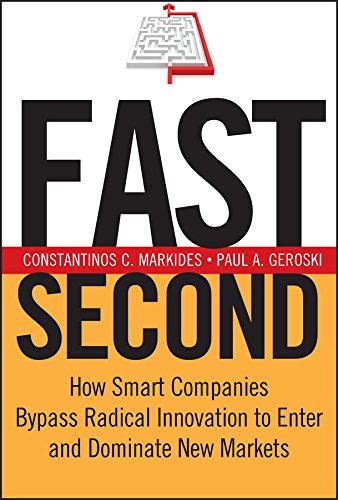
Fast Second illustrates how to determine which new markets have the potential to be successful and how to move into them before the competition does, when to make a move into a new market, how to scale up a market, where to position a company in the market, and whether to be a colonizer or a consolidator.
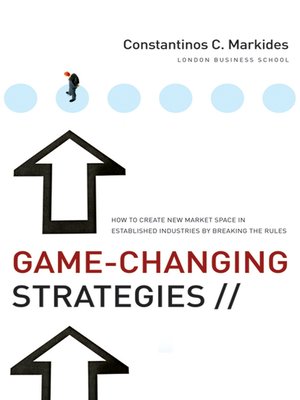
Game-Changing Strategies presents practical ideas on how established firms could not only discover new radical business models but also grow them next to their existing business models.
His forthcoming book is entitled Architects of Change and is set to launch in April 2021. The new book explores how individuals could design innovative solutions to social problems in ways that make them easily scalable.
Costas is currently serving on several editorial boards of strategic management journals among which is Sloan Management Review, the research-based magazine published at the Massachusetts Institute of Technology (MIT).
Have a long term strategy, especially in a fast-changing world; listen to the customer, but don’t always do what they say; don’t feel threatened by disruptive innovation; promote innovation in the face of core resistance; and, finally, do your best to bridge the know-do gap.
COSTAS MARKIDES
Do you want to get your company ready for an amazing 2021?
Access now BRAND MINDS Business Strategy Masterclass for Top Executives with prof Costas Markides!
Join the Conversation
We’d love to hear what you have to say.
Get in touch with us on our LinkedIn Page, Facebook Page, Twitter, TikTok or YouTube.
